Luz sobre el misterio de Stonehenge; arqueólogos británicos hallan un poblado neolítico cerca del monumento
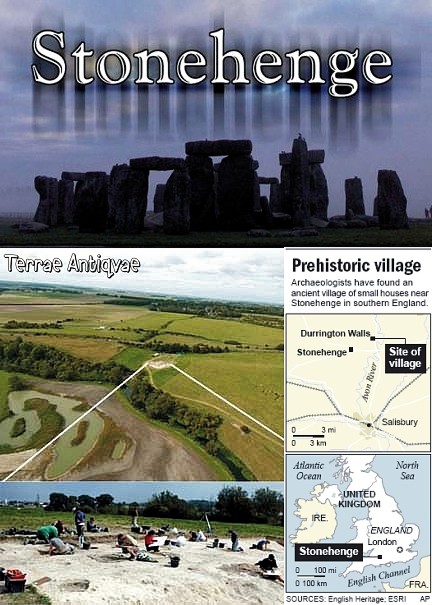
Un grupo de arqueólogos cree haber resuelto uno de los muchos misterios en torno a Stonehenge, el complejo monumental de piedras en la llanura de Salisbury, al suroeste de Inglaterra. Recientes excavaciones han dado con un asentamiento neolítico donde antaño se celebraron grandes festejos y ceremonias fúnebres. El enclave fue probablemente morada de los propios constructores del famoso conjunto prehistórico, así como de sus descendientes. Se sitúa a unos tres kilómetros de distancia, en el llamado Durrington Walls, donde, en 1965, se localizaron huellas de una construcción de madera similar al círculo de Stonehenge.
Los expertos sostienen que en el asentamiento se celebraban festejos y ceremonias fúnebres.
Mike Parker Pearson y su equipo de la Universidad de Sheffield piensan que ha hallado el eslabón que une ambas sedes. El poblado de Durrington estaría formado por cientos de viviendas construidas hace 4.600 años, en la misma era en la que se data el complejo de piedra. De momento se han excavado ocho moradas, con sus respectivos huecos para dormir o guardar provisiones, que han arrojado luz sobre las peculiares costumbres de sus inquilinos.
En el suelo de estas chabolas se han detectado enormes cantidades de huesos de cerdo y ganado, que los expertos relacionan con multitudinarias fiestas. Los antiguos habitantes de Stonehenge celebrarían por todo lo alto el solsticio en un ritual que, con ciertas variaciones, aún perdura entre los druidas y las tribus contemporáneas de new age.
"Es el más rico -y con esto quiero decir el más mugriento- enclave de la época que se conoce en el Reino Unido. Nunca habíamos visto tal cantidad de cerámica, piedra y huesos de animal. No es un tipo habitual de basura doméstica. Los huesos de animales se echaban al suelo a medio comer. La gente venía aquí a celebrar una fiesta. Podríamos decir que fue el primer festival gratuito", ha comentado el profesor Parker Pearson a la prensa británica.
Cada vivienda mide unos cinco metros cuadrados, con el suelo de arcilla y la estructura de madera. Gentes del resto de la región acudirían a festejar con pantagruélicas comilonas la llegada del verano y del invierno. Según el equipo de Sheffield, este poblado formaría con el vecino Stonehenge un complejo religioso. El primero relacionado con los festejos invernales y el segundo con los del solsticio de junio. En ambas sedes neolíticas se han descubierto, además, caminos de piedra hasta el río Avon. "Creemos que Durrington fue un enclave complementario a Stonehenge. Era el lugar que los vivos utilizaban para celebraciones. Pienso que traían aquí las cenizas y huesos de sus muertos para depositarlos en el río. La gente vendría a celebrar los solsticios de invierno y verano, yendo al río por la avenida que sale del pueblo y retornando por la otra avenida que conduce al espacio sagrado de Stonehenge", explica el experto de la universidad de Sheffield.
No todos los arqueólogos aceptan la teoría de Parker Pearson. Pero la mayoría reconoce que el hallazgo del supuesto asentamiento humanodará combustible al debate en torno a los numerosos misterios sobre el origen de las piedras, la creación del círculo y su finalidad a lo largo de la prehistoria. "No ha habido muchas excavaciones en la zona en años recientes y este nuevo trabajo estimulará novedosas e interesantes teorías en años venideros", dijo a la BBC el profesor Andrew Fitzpatrick.
Las gigantescas piedras de Stonehenge proceden de Gales, a 250 kilómetros, y nadie se explica cómo y por qué se trasladaron a Salisbury. El círculo de piedra es uno de los monumentos más visitados, y pese a su estatus como reliquia mundial está acorralado entre dos carreteras de intenso tráfico.
Fuente: LOURDES GÓMEZ, Londres / El País.com, 1 de febrero de 2007
Enlace: http://www.elpais.com/articulo/ultima/Luz/
misterio/Stonehenge/elpepuint/20070201elpepiult_1/Tes
(2) Stonehenge Settlement Found: Builders Homes, "Cult Houses"
A major prehistoric village has been unearthed near Stonehenge in southern England.
The settlement likely housed the builders of the famous monument, archaeologists say, and was an important ceremonial site in its own right, hosting great "feasts and parties"
Excavations also offer new evidence that a timber circle and a vast earthwork where the village once stood were linked to Stonehengevia road, river, and ritual. Together, the sites were part of a much larger religious complex, the archaeologists suggest.
"Stonehenge isnt a monument in isolation. It is actually one of a pairone in stone, one in timber," said Mike Parker Pearson, leader of the Stonehenge Riverside Project, a joint initiative run by six English universities and partially funded by the National Geographic Society. (National Geographic News is part of the National Geographic Society.)
The Late Stone Age villagethe largest ever found in Britainwas excavated in September 2006 at Durrington Walls, the worlds largest known "henge," a type of circular earthwork. A giant timber circle once stood at Durrington, which is 1.75 miles (2.8 kilometers) from the celebrated circle of standing stones on Salisbury Plain.
At Durrington the archaeologists discovered foundations of houses dating back to 4,600 years ago (photo)around the time construction began on Stonehenge.
Excavations revealed the remains of eight wooden buildings. Surveys of the landscape have identified up to 30 more dwellings, Parker Pearson said.
"We could have many hundreds of houses here," he added.
The initial stone circle at Stonehengethe so-called sarsen stoneshas been radiocarbon-dated to between 2600 and 2500 B.C.
The dates for the village are "exactly the same time, in radiocarbon terms, as for the building of the sarsens," Parker Pearson said.
Six of the houses so far unearthed measured about 250 square feet (23 square meters) each and had wooden walls and clay floors. Fireplaces and furnituresuch as cupboards and bedscould be discerned from their outlines in the earth, Parker Pearson said.
Two more dwellings were uncovered away from the main settlement, to the western end of the henge.
Found by Julian Thomas of Manchester University, these additional buildings were surrounded by a timber fence and a substantial ditch.
There is evidence for at least three other such structures in the same area, Thomas said.
"Cult Houses"
The project team says these imposing buildings to the west may have been the homes of chiefs or priests who lived separately from the rest of the community.
Another theory is that the buildings were used only for rituals, as hardly any trace of household waste has been found inside them.
"They may have been more like shrines or cult houses," Thomas said. People may have gone to them "to invoke the spirits of ancestors" or "to have out-of-body or trance experiences."
The main group of houses were clustered along an impressive stone avenue discovered by the team in 2005.
Measuring some 90 feet (27 meters) wide and 560 feet (170 meters) long, the avenue linked the site of the former massive timber circle at Durrington to the River Avon. The road mirrors a similar avenue at Stonehenge that connects to the Avon downriver of Durrington.
The team says this and other parallels between the two monuments indicate that they formed a much larger religious complex. People moved between the two sites via the river during important ceremonies, the archaeologists suggest.
Stonehenges avenue, the team notes, is aligned with the summer solstice sunrise. Durringtons avenue lines up with the summer solstice sunset.
Likewise, Stonehenge is aligned with the winter solstice sunset, whereas Durringtons large timber circle was lined up with the winter solstice sunrise.
"Durrington is almost a mirror image of its stone counterpart at Stonehenge," Parker Pearson said. "You can pretty much overlie the plan of Stonehenge on the timber circle and see theyre the same dimensions."
After the initial construction of Stonehenge, the Late Stone Age, or Neolithic, village became a place where people stayed during ritual feasts, Parker Pearson believes.
Describing the settlement as a "consumer site," he says its residents werent involved in usual day-to-day activities.
"There are a few tools for scraping hides and that sort of thing. But its completely different from any other Neolithic settlement assemblage weve ever looked at before," he said.
Large quantities of pottery fragments and animal bones found at Durrington appear to support this idea. Prehistoric pigs teeth from the site suggest the animals were slaughtered when they were nine months old, which would put their butchering during the winter solstice periodperhaps just in time for feasting.
Stone Age Party
People came from all over southern Britain "to feast and party," Parker Pearson said.
Ongoing isotope analysis of human teeth recovered from the settlement may show that visitors traveled from even farther afield, he added.
Tests carried out in 2002 on nearby buried human remains from around 2300 B.C. suggested that people from the foothills of European Alps also came to the Stonehenge area.
Parker Pearson says that the latest finds indicate that Durrington and Stonehenge represent the domains of the living and the dead, respectivelyDurringtons temporary wooden circle symbolizing life, and Stonehenges permanent megaliths symbolizing death.
After big feasts at Durrington, he theorizes, worshippers proceeded down the avenue there, depositing human remains in the River Avon. The river then carried the remains downstream to Stonehenge.
"My guess as to whats being thrown in is cremation ashes or human bones or perhaps even whole bodies in cases," Parker Pearson said.
"We think the river is acting like a conduit to the underworld."
Evidence of prehistoric pyres has been found along the course of the river. This suggests that worshippers traveled on foot or by boat to Stonehenge, perhaps to bury their dead, Parker Pearson adds.
"The theory is that Stonehenge is a kind of spirit home to the ancestors," he said.
Stonehenge archaeologist Joshua Pollard, of Bristol University, agrees that there does appear to be a strong link between Neolithic standing stones and the human dead.
"Stonehenge is remarkable for the sheer quantity of human remains buried there," Pollard said.
Manchester Universitys Thomas is less sure about the exact nature of the ritualistic connection between Durrington and Stonehenge. But he said that their complementary relationship and connection to the River Avon is "immensely important."
"Rather than just focusing on Stonehenge as something in isolation," he said, "were seeing the way in which it relates to a whole landscape."
Source: James Owen in London for National Geographic News, January 30, 2007
Link: http://news.nationalgeographic.com/
news/2007/01/070130-stonehenge_2.html
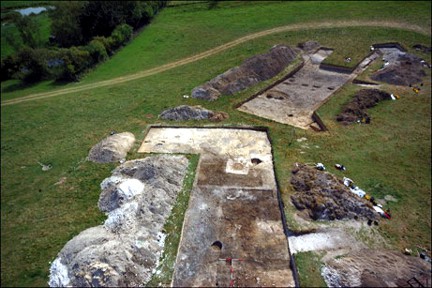
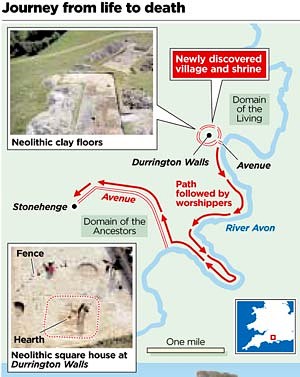
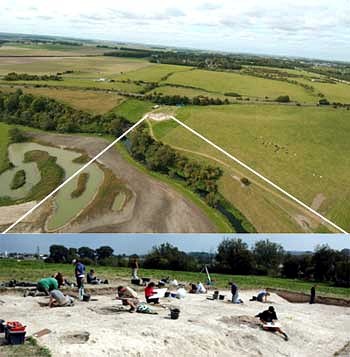
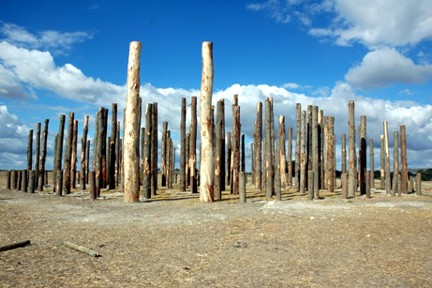
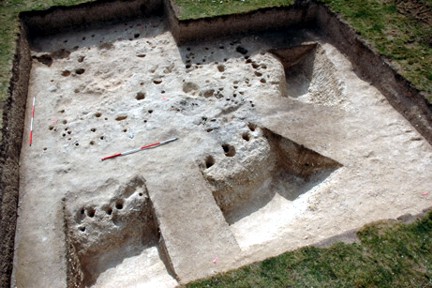
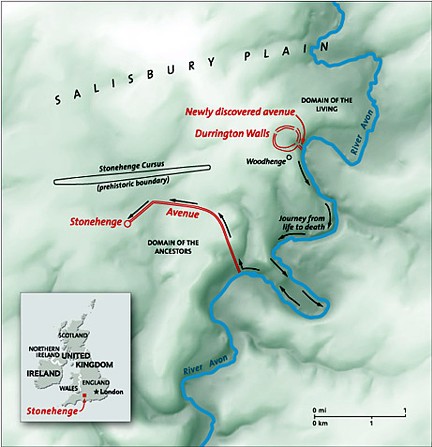
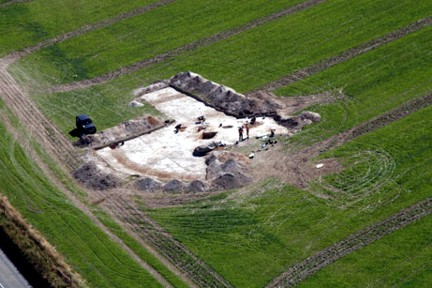
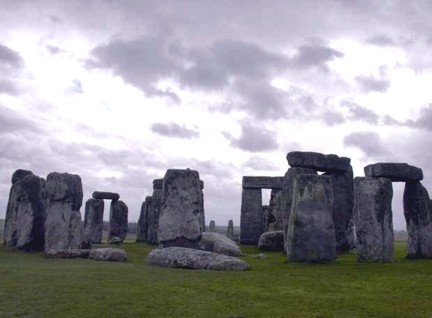
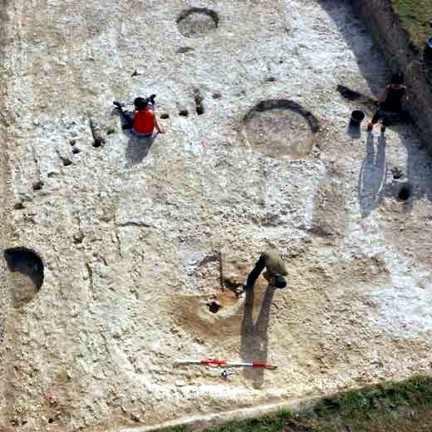
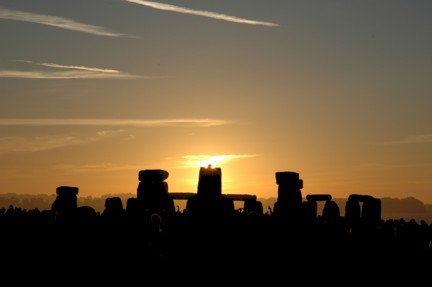
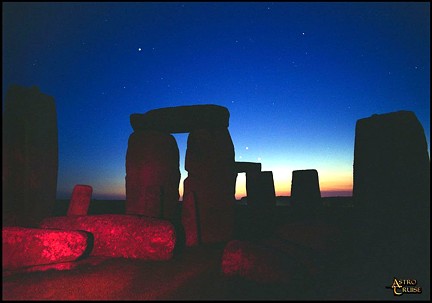
8 comentarios
Luciano -
luis -
J. Luis López de Guereñu Polán -
hector -
Leicca -
¡Gracias por los piropos! Dentro de poco habrá más y más fotos.
Tienes mis votos tú también.
Tengo que he decirte que incluso me he suscrito.
Nos seguiremos viendo.
Si tienes preferencias dime qué categoría quieres.
(Si sigues votando, por favor, en fotoblogs, que es donde se me ve más. Y gracias por venir.)
Fernando Pereira -
Shikilla -
Saludos
Fernando -